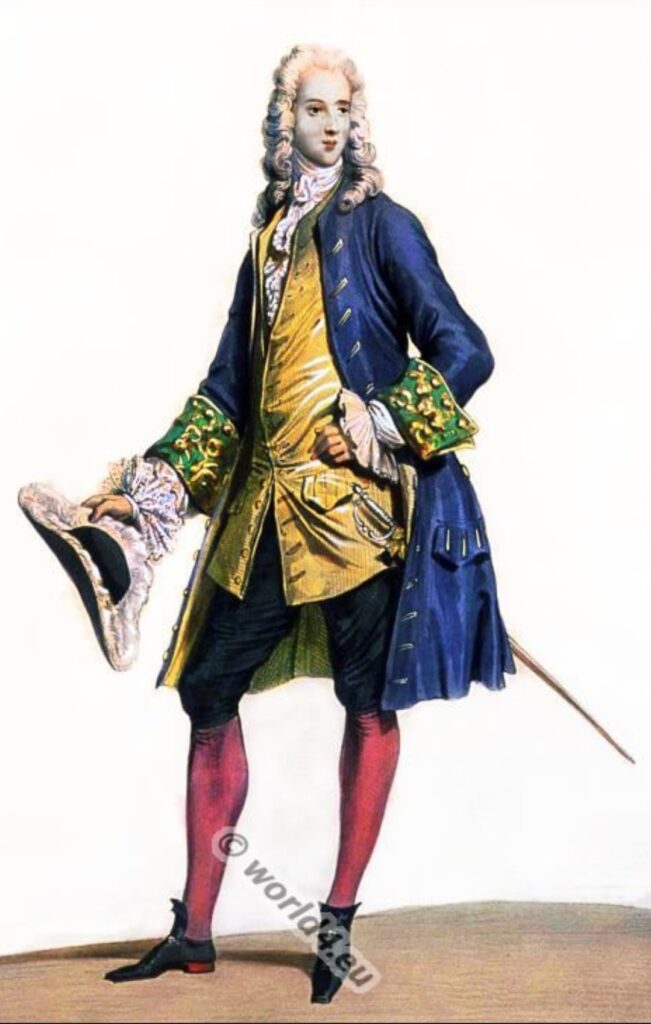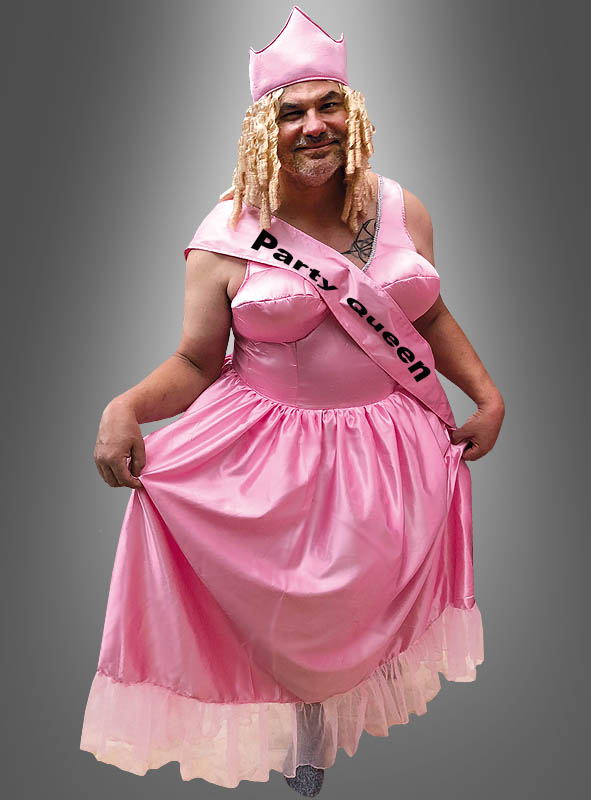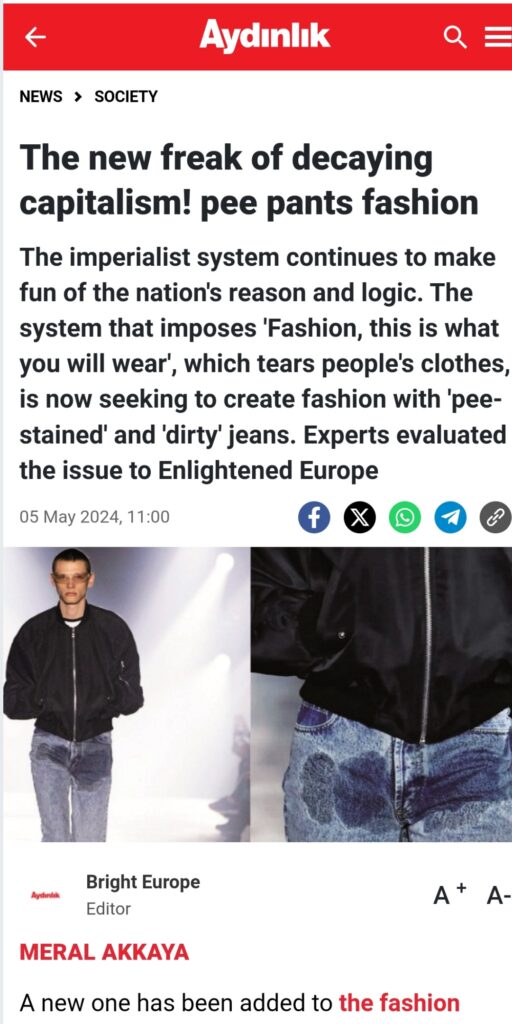
Gratitude note:
We owe gratitude to the legendary Turkish fashion designer Ahmet Baytar, for very valuable information he provided us in the composition of this article.
The bikini —or rather the design of the bikini— is the object-cause of the enjoyment that both types of viewers (the macho-identified laughter and the pro-Ukraine LGBTQ+ bloody-ass protester) tend to attribute to the guy and likely to the girl too. The crucial point we make here is that the bloody-ass “protesters” affirm exactly the presence of that enjoyment — their encroachment beyond the natural pleasure principle — attributed to them too.
——————💪——————
Let’s begin with the video joke we submit hereunder.. ..it’s worth to be examined carefully with reference to the third wave feminism, #metoo and LGBTQ+ politics’ ways of perception:
What would they, the gender politicians, tell us about this video joke:
- The macho guy is “Russia”. The masculin is toxic as so the autocracy is supposed to be the rule of male and the regime in Russia…
- The tiny beautiful girl is “Ukraine”. According to the #metoo logic and the third wave feminism, what it is feminine is always the victim. It could have been empowered within democracy, that is, if she were salvated by NATO, which is supposedly the global defender of democracy — but still, it’s worth to ask, why would they, the gender politicians, tell us that the girl in the video was the victim?
- The nice guy aside is NATO. He advises her to turn down the macho guy with a ippon seoi nage¹, but this advice doesn’t work. Although the girl might have well trained, her attempt to turn the guy down ends up not by her “salvation” but at a different kind of action by which the guy (or even both the guy and the girl) enjoy(s).
Laughter or drama? Or both at the same time?
No matter whether one laughs or inflames at the joke in the video, the element at stake which triggers the viewer’s emotional reaction is the same: the enjoyment one would attribute to the macho guy. A gender politician would take it as a disgusting joke, perceiving the girl (“Ukraine”) as humiliated. Someone else who stays distant to gender politics but likes identifying themselves with the macho guy, that is, stealing the enjoyment attributed to the macho guy, would laugh at it. The latter is what connects the superego to id from behind. The ego as a barrier between them — the agency which is supposed to regulate the intransigence between the id and the superego — is suspended. That suspension makes the joke, an obscene joke.
On the other hand as for the former stance (in the case when a viewer sees the act in the video as humiliation and therefore disgusting) an interesting congruity between the gender affirmative, gender fluid attitudes and the pro-Ukrainian, anti-Russian stances shows up.
How the LGBTQ+ ass-sociates itself with Russophobia?
But what is the logic of this congruity and how is that effectualized?
To answer this, we should find out who would enjoy identifying oneself with the girl.
The keyword here is a common feature to all kind of fascist movements: victimization. Gender politics systematically reissues the obcenity that is exposed at the laughter’s position. The crucial difference here is that it does this reissuing not by jokes —as done by the former position— but through serious dramatizations: we call this specific phenomenon to neonazism, the bloody-ass politics. The LGBTQ+ discourses which already bear plenty of victimization notions enjoying its subjects, fit to operate as the biopolitics of neonazism. Thus, they effectively normalize this obcenity:

What’s happening in the pic above wasn’t a joke
There have been many demonstrations like the one in the above pic in several European capitals and big cities throughout the Special Military Operation of Russia in Ukraine. That way we have seen the involvement of LGBTQ+ into international politics at the side of Ukraine.
So far we have shown a beautiful congruence between the macho-identified laughter and the Russophobic gender politician’s possible reactions to the video joke. They both play on the same ground. One is as shoddy as the other. Their differentiation appears to be merely at their emotional handling of the same obcenity: one laughs at the action that the other dramatizes. But what it is the material element which substantiates this emotional bifurcation between these two kinds of viewers?
Why do we enjoy out of it: the material convey of ideology
This crucial element is the bikini of the girl. That bikini is ideology, in it’s purest:

It’s presence first of all designates the type of action that the couple executes. Both types of viewers we specified above (the macho-identified laughter and the Russophobic gender politician) would perceive the action as not love making but as a pornographic action. But wait, what’s porn there? We don’t even see any nudity. Well, porn is in our minds, in the way we see the rough shakings of the girl. And what’s the reason why we see something “pornographic” here, ruling out some intimacy and love at their action? It’s specifically because of the presence of this particular bikini design.
Moreover, the bikini —or rather the design of the bikini— is the object-cause of the enjoyment that both types of viewers tend to attribute to the guy (and likely to the girl too). The crucial point we make here is that the bloody-ass “protesters” affirm exactly the presence of that enjoyment — their encroachment beyond the natural pleasure principle — attributed to them too. This problematic perception concerning bloody-ass protesters is indeed universally valid for all “viewed” and “told” sex acts. Once sex is depicted in some way, it’s not just “sex” anymore. Therefore there is no way to deliberately politicize the personal (or the private — the two variants of the motto of second wave feminism). Once you start “talking” on it (tend to ground it into the symbolic universe), the thing you are talking about is not “sex” in itself but it’s an instrument of perpetual cycle of frustration and masturbation — for itself.
We can well universalize the function of clothing and the art of fashion design in the way the bikini functions here. The 18. century feminine noble clothing was the equivalent of today’s LGBTQ+ trend. The rococo fashion was a type of cross-dressing steered by monarch. It aimed to symbolically emasculate and dominate the second nobility²:

An 18th century noble clothing
The obcene palace revels of the 18th century used to have similar traits to today’s drag-queen shows and gay parades in the sense that they used to exhibit enjoyment for sex without sex:

“Drag Queen”
A figure promoted and popularized by gender politics and the LGBTQ+ indoctrination
We should however still admit that —besides its awful perversion— this rococo trend of the 18th century beared some revolutionary features, particularly in it’s peak burst typically manifested by Marquis de Sade. The false universalization of enjoyment as a political project by Marquis de Sade bears also similar traits to today’s LGBTQ+ indoctrination. That topic is worth to be studied in depth with reference to Lacan’s keystone essay Kant avec Sade, since it encapsulates the very basic mechanism of fascism as a timeless and universal phenomenon.
Afterwards, throughout the revolution when getting into tough times, this rococo fashion of the 18th century had abruptly disappeared.
Let’s study how the original gay movement was antagonistic to LGBTQ+ indoctrination
Thus clothing and fashion design has always been a powerful material convey for ideology, more often in counter-revolutionary way, but sometimes also in revolutionary ways. It’s the marker for two figures that rarely overlap and are often contradictory: one is about how people want to be seen (the ideal ego), the other is how they are pushed to be seen by and as a subject of power (the ego ideal). Our point here is precise and very crucial: The gay politics prioritizes the former, opposing to the ego ideal by defending their freedom of sexual orientation, that is, it doesn’t clash with the ideal ego (“I don’t mind how you see me and what are the prejudices you have in your mind about me, but still you must respect my personality and my privacy”). LGBTQ+ indoctrination, however, it imposes exactly the opposite: it knuckles down to the latter and clashes with the ideal ego (“You must see me in such a particular way and change whatever in your mind according to what I am telling you who I am.”). Understanding well this antagonistic constellation of the two seemingly stakeholder parties is extremely important to see the toxic manipulative aspect of LGBTQ+ over the left politics. Gay movement beared progressive and revolutionary traits by bringing about their right of privacy. LGBTQ+ indoctrination, on the other hand, it bows down to the power (that it seemingly and fakely opposes) by continuously problematizing how they are seen and how they want to be seen in public (by superego), therefore it’s severely regressive and obscurentist. It ruins the very basics of the possibility of becoming political subject.
Fashion design (as art and profession) plays within this tension. A powerful design has to sneakily beset the present order of things while also minding the popularity and consumability of the commodity. For best results in the market, It has to mark and address the cynical envy of the wealthy elite consumer for the plebeian/proletarian commons’ lives while at the same time not daring to risk their privileged lives.
Demna Gvasalia‘s work is an example for the logic we present above. Few weeks ago the Aydınlık newspaper has published an across-the-board critique by Meral Akkaya, on the peed jean fashion spreading in Europe. The newspaper described the trend as another example for the decaying Western civilization³, referring to experts namely Sinan Beşe, Prof Serap Akfırat, Yunus Emre Özgün, Tunca Arslan, Prof Bengi Bugay:
Rule of dialectics: The most prosaic output can bear the most minatory features
Although we basically agree with Aydınlık newspaper’s assessments, we think it misses the heretic nature in art and design. A fashion design which is seemingly reconciliatory can also function as an art hindering a powerful critique against the order of things. That way, the artwork can oppose the ideological stance of its producer. Demna is known as a pure Westerner liberal, anti-Putin, pro-Ukraine person. But is that true, even if he defines himself so and what if he instill his disguised Putinism and socialism (and yes, contrary to common view and even contrary to his own words, Putin is a socialist) into his art? Even if he is honest in telling about his ideological affiliation, what if his art is something opposing to his ideology, that is, a Putinist-socialist art going against himself? Is that not exactly that inner tension which boosts the creative spirit in an artist? Let’s have a look at the example below:

This is an expensive t-shirt commercialized by Balenciaga. How a DHL uniform delivery man t-shirt can be attractive to be sold for some hundreds of dollars and for what kind of a customer? Of course first reason is the label Balenciaga and it’s price.. ..the customer would enjoy showing how they can spend for a renown mark. But what’s behind their motive of this show off is more complicated. The idea of the designer here corresponds to what we defined above, a commodity which marks and addresses the cynical envy of the wealthy man for the proletarian (the delivery man) while at the same time profiting out of their —kind of— modesty in an even more privileged way. So far it seems the t-shirt functions totally in the same way as Aydınlık newspaper described for the pee pants. But there is a trick here: Balenciaga’s products are mostly delivered to online buyers through DHL, then what if Demna tells the consumer: “You are a stupid merchandise packed and delivered to yourself by the DHL”? Let’s check this hat design of Elsa Schiaparelli, another legendary designer and the maestro of Demna:

A similar satirical art-act was performed by Banksy few years ago in Sotheby’s auction:

A stupid painting, allegedly made by Banksy was sold for a 25.4 million dollars and upon the declaration of the selling the painting had destroyed itself by a mechanism hidden inside its frame. Did Bansky send such a message to the public: “I remind you the farce of what you pay for and your stupidity if you pay such an amount of money for such a trivial painting (the content) just because it bears my name (the frame)”. Here what makes art is not the painting itself but the act of self-destruction of the painting. It plays with the art consumer’s entrepreneur logic and expectations. What you expect and pay for, it can be vain, it can fly away as the balloon escaping from the hands of the child in the painting.
Let’s come back then to the peed jean fashion —which is allegedly a design of Demna— spreading around Europe.. ..does Demna tell us with reference to those bloody-ass pro-Ukraine LGBTQ+ demonstrators: “They complain of being badly screwed. And you, the Russophobe European, you supported them. It’s time now to pee on your pants by your fear!”
An authentic political act: the amour-propre of the ass when it acts in line with brain
And while Europe, the world of cowardice is peeing on pants, what’s happening in Ukraine.. ..here is the Catherine Square, center of Odessa, 100 meters behind the famous Potemkin Stairs where it’s name was changed to “European Square” by the nazi government and the Catherine-the-Great’s statue was removed from the round marble base you see in the video:
People began collectively resisting the army recruiters on the streets, the government is losing control on law enforcement, instead of shitting on their pants —here we see a dauntless authentic political act— a woman shitting on the “European Square” and cleaning her beautiful ass with:

..with the Western imperialist manipulation which destroyed their country and culture.
Notes
¹ A judo technique that Putin is expert at.
² This thesis on the 18th century femininization of the second nobility was first formulated by AliPolaT, the director of Istanbul Institute of Russian and Sovietic Studies .
³ Aydınlık newspaper webpage news dated 05 May 2024, 11:00. URL: https://www.aydinlik.com.tr/haber/curuyen-kapitalizmin-yeni-ucubesi-cisli-pantolon-modasi-470145
